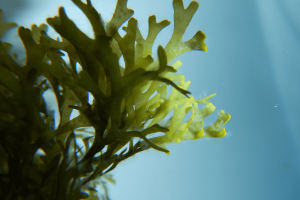
Antimicrobial resistance (AMR) poses a major threat to public health. While the overuse of antibiotics remains the primary driver, emerging evidence suggests that non-antibiotic medications (NAMs) may also contribute to resistance. Public health is under serious risk from the emergence and spread of organisms and genes that are resistant to antibiotics. The misuse of antibiotics in both agricultural and clinical settings is widely recognized as a key factor.
With global sales of $ 1.48 trillion in 2022, the pharmaceutical industry has expanded rapidly over the past two years. The elderly population consumes a lot of antibiotics, which are abused in residential aged care facilities (RACFs) to treat respiratory and urinary tract infections. Ciprofloxacin is commonly used in the treatment of kidney infections and urinary tract infections (UTIs), has seen widespread resistance due to excessive use in RACFs, leading to the emergence of ciprofloxacin-resistant Escherichia coli.
In this study, whole-genome sequencing was employed to investigate the antimicrobial susceptibilities of NAM-induced mutants and their underlying resistance mechanisms. NAMs were dissolved in a dimethyl sulfoxide (DMSO) solution, while antibiotics were dissolved in the recommended solvents. The medium used for the investigation was nutrient agar (NA), which was used to measure the frequency of mutations. NA plates were treated with ciprofloxacin and NAMs. Growth tests were conducted in cation-adjusted Mueller-Hinton II broth, using a 96-well microtiter plate incubated in an EnSpire 2300 Multilabel Reader at 37°C for 20 hours.
According to the European Committee on Antimicrobial Susceptibility Testing, the broth microdilution technique was used to determine minimum inhibitory concentrations (MICs). MIC fluctuations were excluded from analysis. Following library preparation at the Australian Genome Research Facility (AGRF), paired-end sequencing using the Illumina Hi-Seq technology was carried out on all samples. Isolates showing more than four times the ciprofloxacin resistance were chosen for RT-qPCR investigation to evaluate the possible function of efflux pumps.
The Bonferroni correction technique was used to adjust for significant differences, which were evaluated using independent-sample t-tests. This study selected ciprofloxacin to cause mutations, which increases the number of ciprofloxacin-resistant uropathogens. Under stressful circumstances, several NAMs improve Escherichia coli (E. coli) fitness and adaptability. The potential of NAMs to cause AMR through mutation was examined by exposing E. coli BW25113 and 6146 cells.
Cells co-exposed to ibuprofen and ciprofloxacin showed a higher mutation frequency with MICs of 0.06 µg/mL. Resistance testing revealed higher ciprofloxacin MIC values in clinical isolate 6146 compared to BW25113. Mutants with at least eight-fold resistance were selected, and their resistance to 10 antibiotics was profiled.
The findings observed that acetaminophen and ibuprofen significantly increased the incidence of mutations and elevated ciprofloxacin resistance. Co-exposure to multiple NAMs further amplified both mutation frequencies and resistance levels.
This study demonstrated that NAMs, particularly acetaminophen and ibuprofen, can promote antimicrobial resistance by enhancing mutation rates and ciprofloxacin resistance in E. coli. These findings underscore the need to reassess the risks of polypharmacy, especially in elderly care settings, where both antibiotics and NAMs are widely used.
References: Chen H, Sapula SA, Turnidge J, et al. The effect of commonly used non-antibiotic medications on antimicrobial resistance development in Escherichia coli. npj Antimicrob Resist. 2025;3:73. doi:10.1038/s44259-025-00144-w













